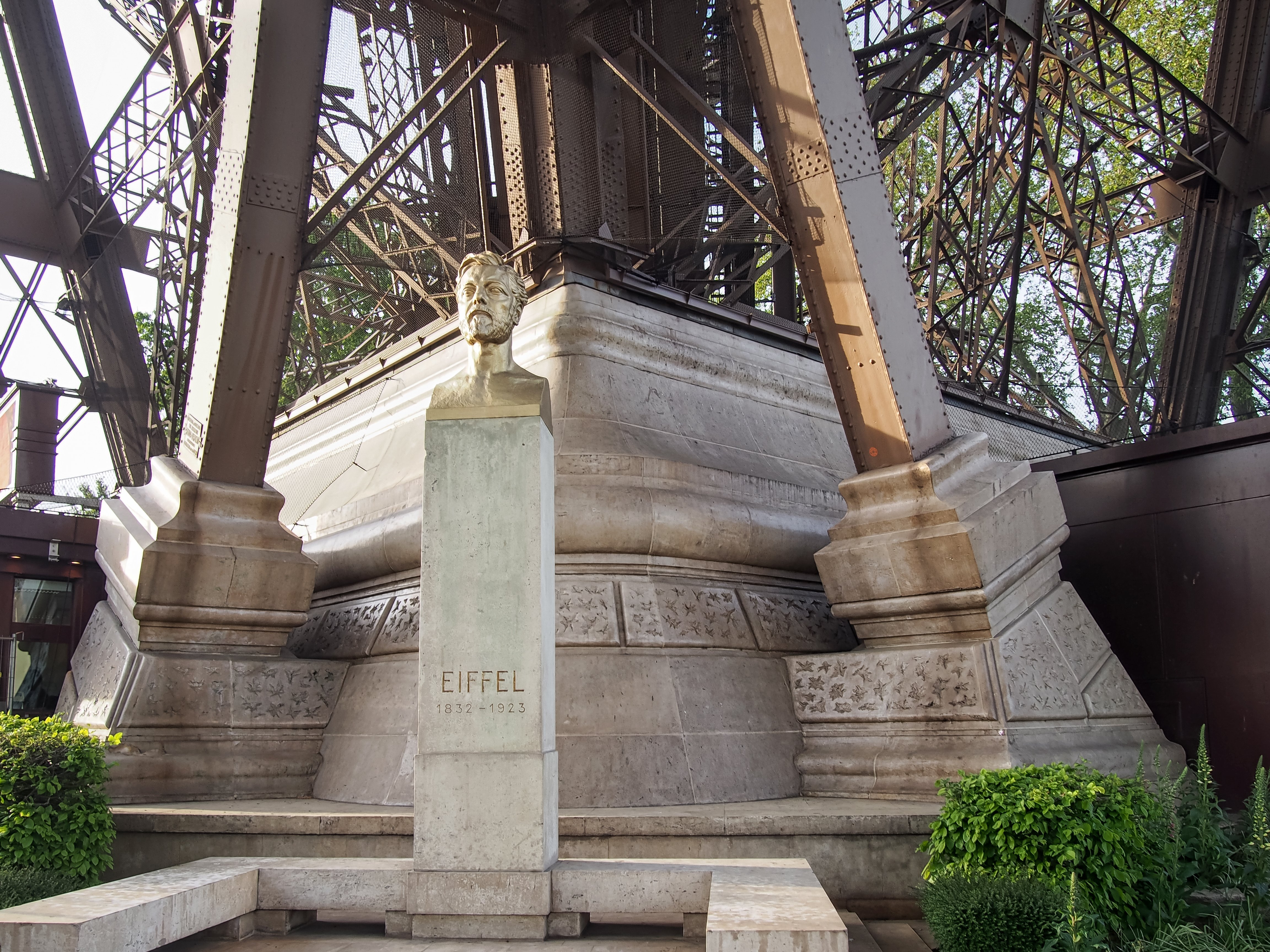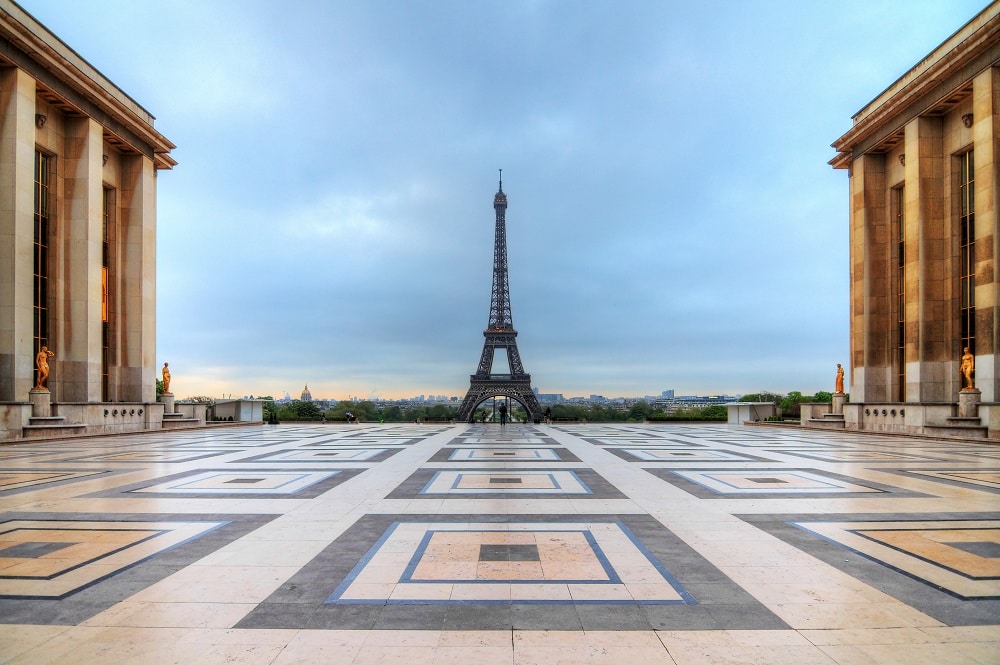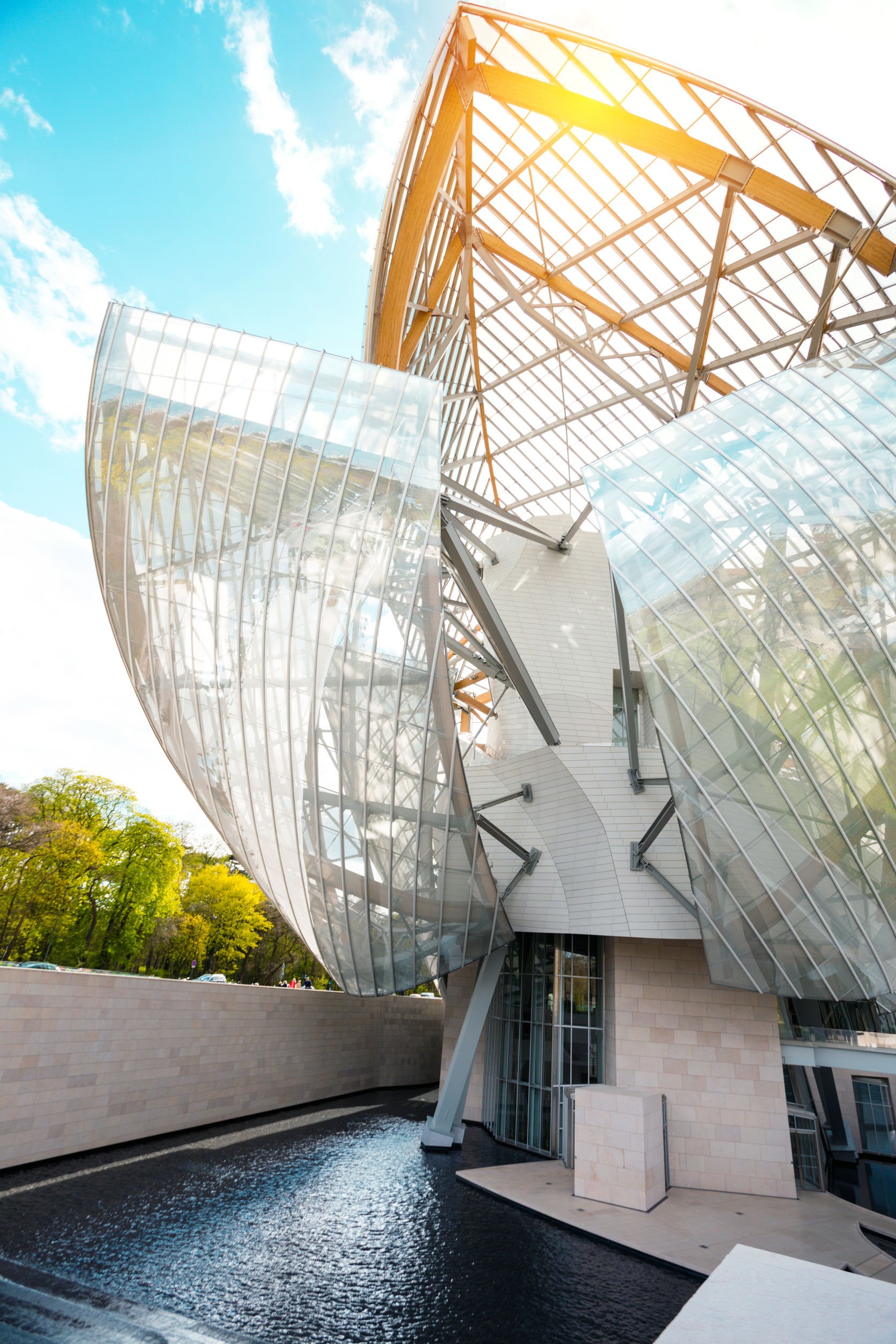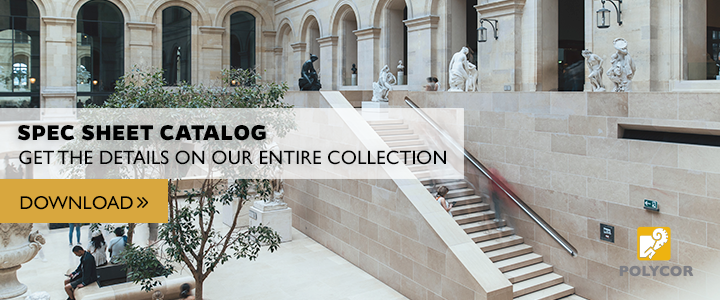.jpg?width=4600&name=Maison%20Carr%C3%A9e%20-%20N%C3%AEmes,%20FR%20-%20Lens%20(2).jpg)
There are many ways to delve into the beauty and elegance of French culture: You can focus on the food or art. But why not take a tour of France through natural stone? A feature of many of France’s famed monuments and buildings - whether 19th century designs or bold modern ones - is prized natural stone from French and American quarries. Buildings and structures made of natural stone are part of France’s collective memory and identity. They have contributed to the country’s famously elegant and harmonious aesthetic. Its exceptional durability is a feature equal to its fine appearance, as many a well-preserved building or monument attests.
Last year, Polycor acquired four limestone quarries in France’s Burgundy region. This limestone collection includes 13 stones, with a subtle and alluring range of colors and character, from creamy beige to golden yellow, from consistent and uniform to shell inclusions and fossil fragments that are exclusive to the Burgundy region. Creators, builders and innovators have trusted and used one of kind Burgundy limestone since the days of the Roman Empire. It has become celebrated and appreciated globally and used in the monuments and prestigious landmarks around the world.
In honor of France’s National Day, aka Bastille Day, on July 14, we’re touring France to visit sites made with iconic Polycor stones.
The Eiffel Tower, Paris
 The Iron Lady is supported by a base of MASSANGIS JAUNE, a limestone quarried in Burgundy.
The Iron Lady is supported by a base of MASSANGIS JAUNE, a limestone quarried in Burgundy.
Gustave Eiffel’s tower was conceived as an entrance way to the World’s Fair of 1889, held in Paris on the centennial of the French Revolution. The wrought iron structure is the undisputed symbol of Paris, but in its early days the Eiffel Tower was not popular. A joke circulated that the only place safe from having to view the eyesore was from within the tower itself. Over time citizens began to appreciate its Belle Epoque elegance. But its structural brilliance was never called into question. The Eiffel Tower was and remains a feat of engineering. It’s mathematically determined to offer the most efficient wind resistance possible. Its sturdiness is symbolized by the stonework pedestal on which the Tower’s legs stand. The Iron Lady is supported by a base of MASSANGIS JAUNE™, a limestone quarried in Burgundy that is defined by its warm golden hues and luminescence. The Eiffel Tower may have made Massangis famous, but today the French limestone has become beloved commercially and privately the world over.
Place du Trocadéro, Paris
 The Palais de Chaillot built in 1937, replaced the original Palais du Trocadéro. It’s clad in the same MASSANGIS JAUNE limestone as its iconic neighbor, the Eiffel Tower.
The Palais de Chaillot built in 1937, replaced the original Palais du Trocadéro. It’s clad in the same MASSANGIS JAUNE limestone as its iconic neighbor, the Eiffel Tower.
Many visitors head to the Place du Trocadéro to capture that epic shot of the Eiffel Tower. The Eiffel Tower’s Right Bank neighbor faces it along the Seine, with the Place offering full-on views of the monument. The Place is flanked by several buildings, including the Palais de Chaillot which was built in 1937, replacing the original Palais du Trocadéro. The Palais de Chaillot was built in the Art Deco Moderne style. But it is clad in the same MASSANGIS JAUNE™ limestone as its iconic neighbor, the Eiffel Tower. Its creamy yellow and ochre tones, and the occasional crystallized fossil and shell inclusions nestled into the background give this stone a charm that is both very European and decidedly modern. Visitors to the place stand on the oh-là-là-architectural pavers style - a “cube within cube” pattern that further accentuates the 30’s aesthetic of the buildings around it. The pavers were made with shades of classic French limestone.
Fondation Louis Vuitton, Paris
 The enchanting building clad in ROCHERONS DORÉ CLAIR French limestone was designed by US-Canadian architect Frank Gehry.
The enchanting building clad in ROCHERONS DORÉ CLAIR French limestone was designed by US-Canadian architect Frank Gehry.
The Louis Vuitton Foundation showcases how modern techniques can allow legacy stone to be adapted to innovative new uses. This museum and cultural center, sponsored by the luxury goods powerhouse LVMH, is located in the same posh 16th arrondissement as the Place du Trocadéro. The Foundation Louis Vuitton opened in 2014. It’s immediate popularity was not just because of the fantastic array of art inside. It’s an architectural tour de force. The enchanting building was designed by US-Canadian architect Frank Gehry. The design concept came about through conversations between Gehry and LVMH boss Bernard Arnault. The result is a complex structure featuring an array of geometric shapes made up of large glass sails, and concrete facades known as Ductal Icebergs. The concrete slabs have natural stone top layers and were specially produced for the project. When it came to choosing stone cladding Bernard Arnault insisted on Burgundy "Rocherons" limestone, including the elegant beige shades and slightly pink background and fine calcite veins of ROCHERONS DORÉ CLAIR™ limestone. The French limestone is featured in different ways throughout the building in walkways, benches, and promenades. As an example, for the paving application, colors and shades of Rocherons were mixed to give a harmonious whole. Visitors to the Louis Vuitton Foundation pass over this natural stone promenade to take in the stunning water feature. The stones’ earthy beige tones with occasional dashes of pinkish hues add an exceptional elegance to this new landmark.
Grande Arche de la Défense, Paris
 Originally clad in Italian marble the Grande Arche was recently resheathed in durable American granite after the marble began degrading from pollution and shifts in climate.
Originally clad in Italian marble the Grande Arche was recently resheathed in durable American granite after the marble began degrading from pollution and shifts in climate.
Located on the edge of Paris, in a business district known as La Défense, the Grande Arche de la Défense was one of the Grand Architectural Projects that former President Francois Mitterrand claimed as part of his legacy. The Grande Arche runs in an axis linking it with the Arc de Triomphe and the Louvre Pyramid. The 1980s era Grande Arche is the work of Danish architect Johan Otto von Spreckelsen. Its resolutely modern design resembling a giant minimalist door frame. It was originally clad in Italian marble but that stone proved too porous and not durable enough. In recent years a French architectural team scoured the world to find the right stone to reclad the structure and found a natural choice in the flawless character, even grain and purity of color of BETHEL WHITE® granite. In a happy marriage of Franco-American alliance they re-clad the arc in Bethel White from the celebrated quarry in Vermont. The result is clean and sleek, and with no worries of durability. The choice of the white American granite over Italian marble is a growing trend worldwide as the granite proclaims its ability to stay white in all weather conditions.
The Russian Orthodox Cultural and Spiritual Center, Paris
.jpg?width=5124&name=Centre%20Orthodoxe%20-%20Rocherons,%20Comblanchien%20(20).jpg) Local MASSANGIS CLAIR limestone was chosen to achieve the architect’s express wish to adapt the complex to its surroundings.
Local MASSANGIS CLAIR limestone was chosen to achieve the architect’s express wish to adapt the complex to its surroundings.
A five onion dome cathedral on the Seine is a new, and to some, unexpected site. The Russian Orthodox Cultural and Spiritual Center went through some controversial moments, but in 2016 star French architect Jean-Michel Wilmotte unveiled an elegant and soothing glass and stone complex. The domed cathedral is surrounded by four buildings serving cultural functions. It was the architect’s express wish to adapt the complex to its surroundings. So natural MASSANGIS CLAIR™ limestone quarried from Burgundy was a logical choice for the façade. Wilmotte was said to be enchanted by the Massangis stone’s luminescence. 12,000 natural stone elements were honed into horizontal ribbons for the facade. Passages throughout the grounds were paved with COMBLANCHIEN CLAIR™ limestone, a beige limestone also quarried in Burgundy. The interior of the Church features the Massangis limestone including in the rosetta floor.
The Arena of Nîmes
-1.jpg?width=473&name=N%C3%AEmes%20Colloseum-Colis%C3%A9e%20de%20N%C3%AEmes%20-%20N%C3%AEmes,%20FR%20-%20Lens%20(3)-1.jpg) To build the Arena of Nîmes Roman builders extracted stones from local quarries, including the famed Pierre de Lens limestone.
To build the Arena of Nîmes Roman builders extracted stones from local quarries, including the famed Pierre de Lens limestone.
Every day, hundreds, if not thousands, of tourists come to Nîmes, a city in the south of France, founded as a Roman colony during the first century B.C., to visit its famous amphitheater and marvel at the genius of its ancient master builders. The arena they designed to host massive public spectacles such as gladiatorial games, is an extremely complex building that comes, in many architectural critics’ opinion, close to perfection. Its Roman builders extracted stones from local quarries, including the famed Pierre de Lens limestone from the nearby quarry of LENS™ limestone. It’s a luxurious light ivory-toned to white limestone with occasional fine crystalline slivers adding depth to the surface. Its fine grain contributes to the complexity of the arena which has stood the test of eras in no small part thanks to the durability of French limestone.
Maison Carrée, Nîmes
.jpg?width=5000&name=Maison%20Carr%C3%A9e%20-%20N%C3%AEmes,%20FR%20-%20Lens%20(6).jpg) Local masons building the temple Maison Carrée prized above all the LENS limestone they sourced from the quarry near the city.
Local masons building the temple Maison Carrée prized above all the LENS limestone they sourced from the quarry near the city.
After visiting the arena visitors can further plunge themselves into Roman-era Nîmes with a visit to the Maison Carrée or “Square House”. Located in the historic old town, the Maison Carrée is an extremely well preserved Roman building. Local masons building the temple prized above all the LENS™ limestone they sourced from the quarry near the city. It was a natural choice for the carvings and embellishment of the Maison: the fluted columns, Corinthian capitals, and the Frieze were all carved with this lovely, ultra durable stone with its characteristic small grains and its white natural color and homogeneity. There is no question that the prized French limestone has helped define the grandeur of this historic building.
Is French limestone right for your next project? Find out with the spec sheet catalog.
